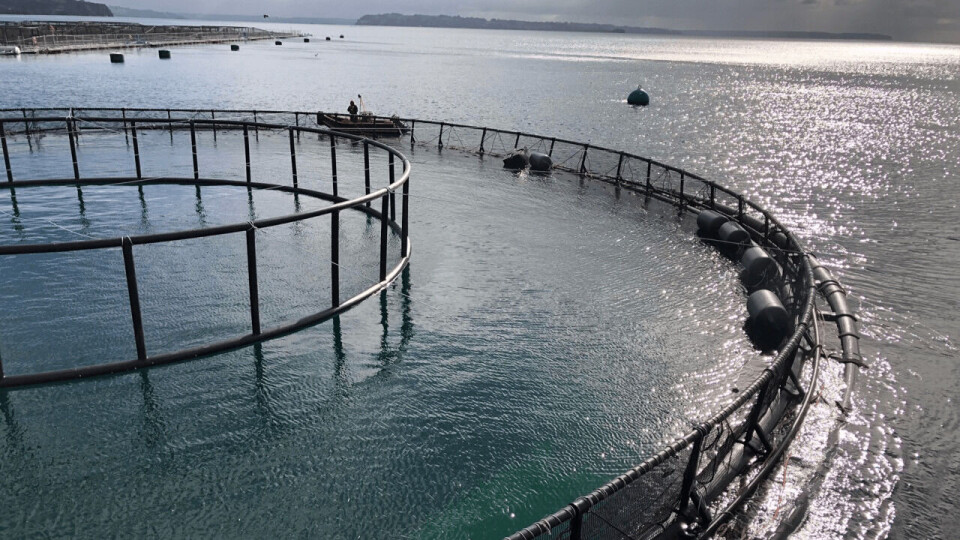
Chile: offshore submersible cage begins test operations
A submersible salmon cage developed to take Chile’s aquaculture industry offshore has been stocked for the first time.
Fifty thousand fish have been put into the cage, which is 40 metres in diameter and 12 metres deep and is sited at a fish farm run by salmon producer Invermar.
The cage is the work of EcoSea Farming, which is leading one of two government-funded technological programmes to realise oceanic aquaculture in Chile, in an initiative that began in 2018.

Prototypes
The company’s R&D manager, Alex Brown, told Fish Farming Expert’s Chilean sister site, Salmonexpert, that the programme was in two stages.
“In the first stage the prototypes, sensors and remote control system will be tested, and then we move on to a second phase, on a larger scale, which we have called piloting, in which they will also be tested a pontoon (feed barge) for ocean conditions, sludge capture systems, fish handling systems, automatic mortality extraction and an underwater feeding system,” said Brown.
To develop the prototyping stage, EcoSea and Invermar chose the Traiguén II farm site in Quinchao, because it presents medium exposure, delivering appropriate wave energy conditions for the tests.
Monitoring parameters
“All the logistics of installation, accessories, fish and operation were also contributed by Invermar, a company that has had at all times an invaluable collaboration in the development of this program, demonstrating a clear commitment to innovation,” said Brown.
The cage, which has a capacity of 18,400m³, was towed and installed in its final position during the last days of August and stocked with Atlantic salmon smolts at the beginning of September.
“Currently, we are permanently monitoring all the productive and structural parameters that we have set,” said Brown.
230-tonne harvest
“We estimate to harvest approximately 230 tonnes at the end of the first cycle. And once it is finished, we will carry out, together with Invermar, [state development funding agency] Corfo and the different state agencies that have supported us in this, a thorough evaluation of the technology used.”
The technological team of the programme comprises:
- AEX Group for the anchoring systems
- Innovex for the sensors and remote control
- Sitecna for pontoons
- Fraunhofer Chile for the regulatory and environmental part
- Novatech for the capture of solids and mortality extraction
- The Pontifical Catholic University of Valparaíso in relation to the generation of human capital
- EcoSea Farming SpA providing submersible cage technology for highly exposed conditions and high energy
Extensive experience
“All participants have extensive experience in their field, which we are sure will generate a highly reliable and commercially competitive result for the development of crops in ocean areas,” said Brown, who is also project leader of Fraunhofer Chile Research.
“Additionally, the technological team is actively working in coordination with the State to make oceanic aquaculture technically, productively and normatively a reality in Chile.”
The pilot stage is expected to begin during 2021. “It will be the State who will have the last word regarding the place where the second phase will take place,” said Brown.
“For this, progress is already being made with the necessary coordination, where the ideal is to specify it in a place located outside the five-mile limit. However, if it is not feasible, concessions currently in force have already been identified, those that meet the ‘high energy’ requirements.”
Project officials have not yet divulged how far below the surface the salmon will be kept, or how they will access air to fill their swim bladders.























































